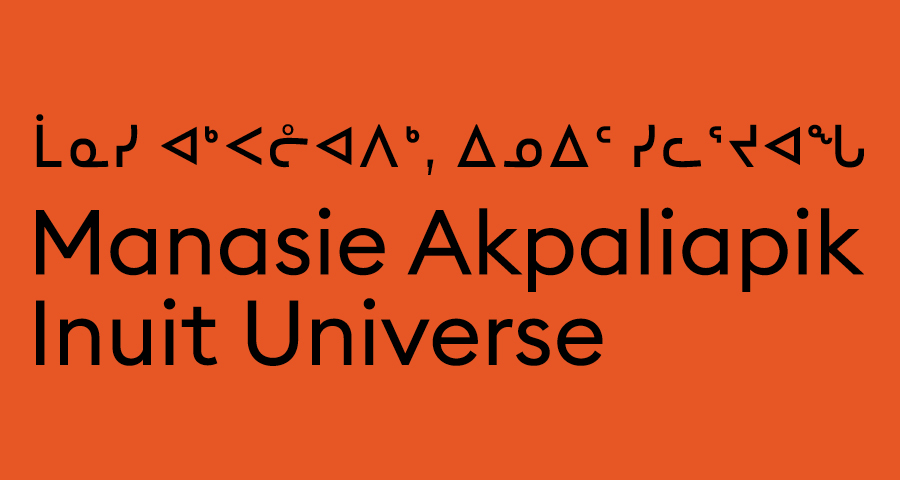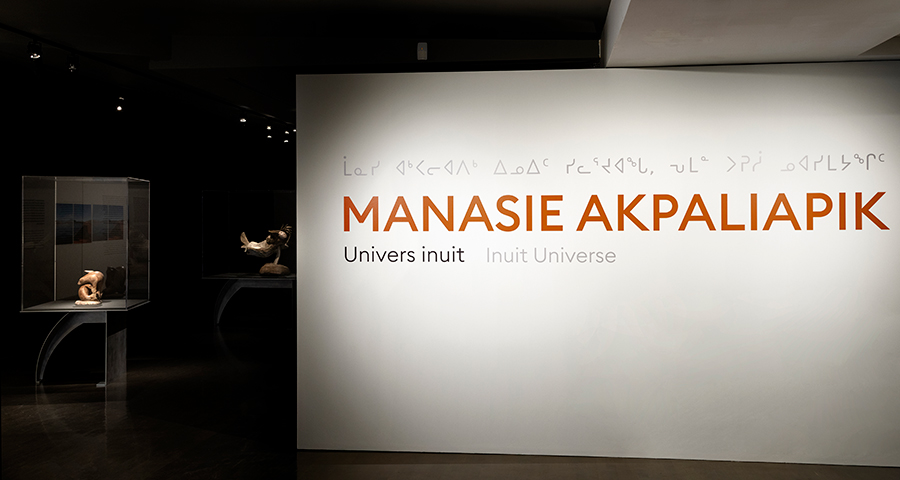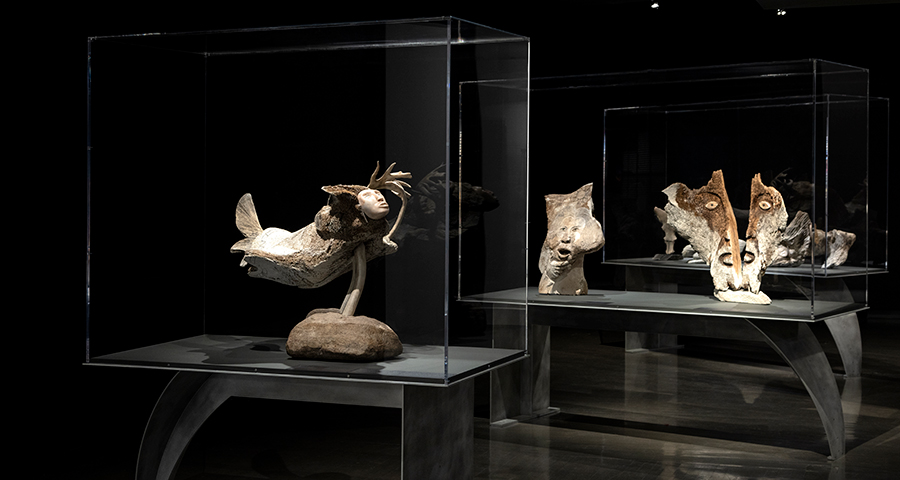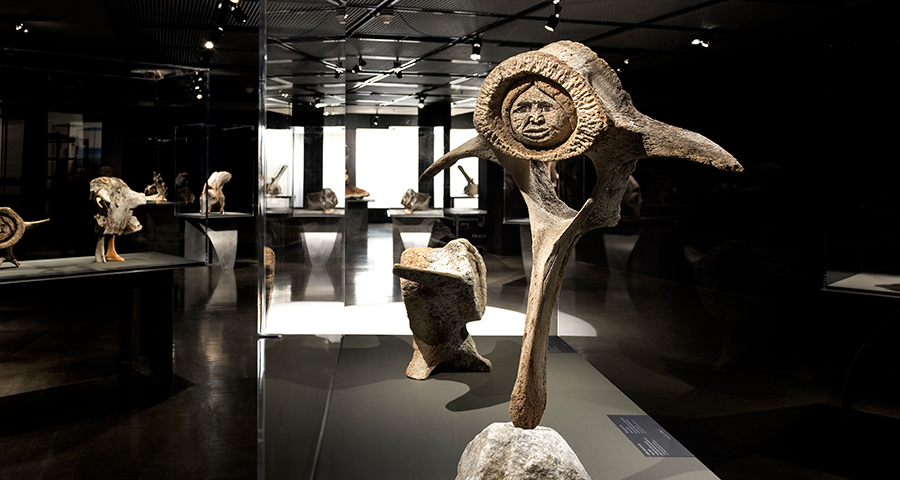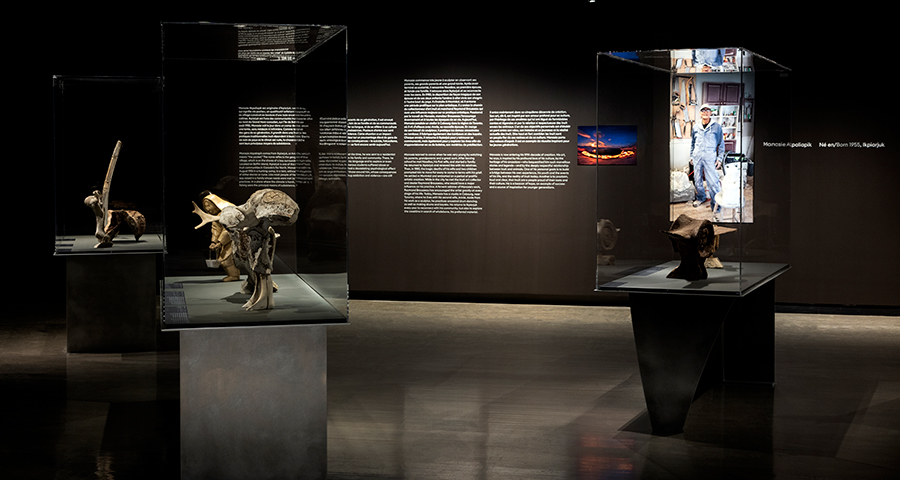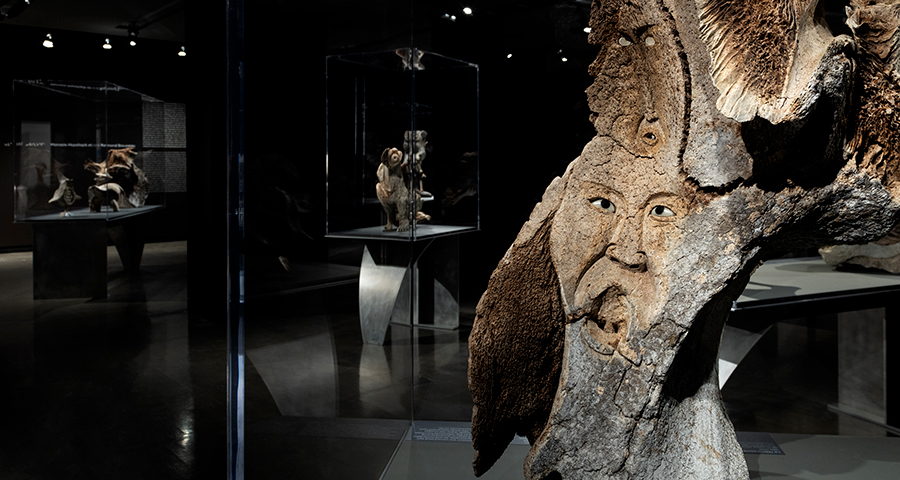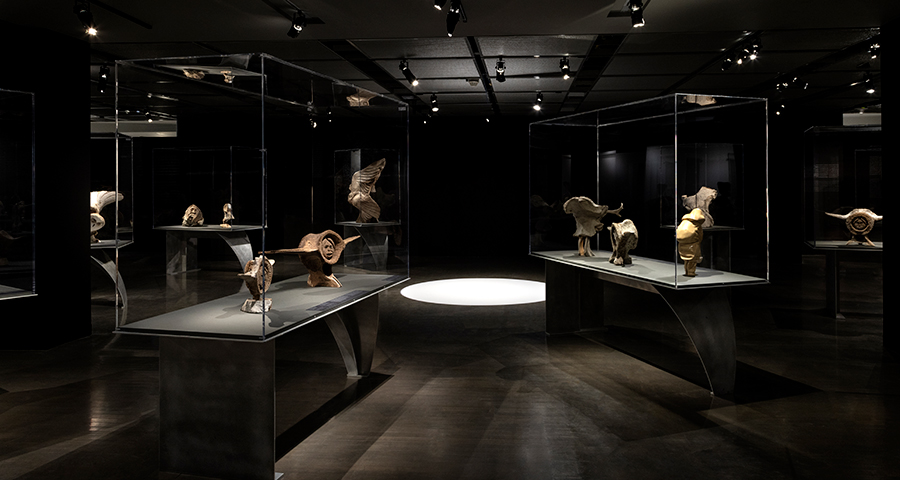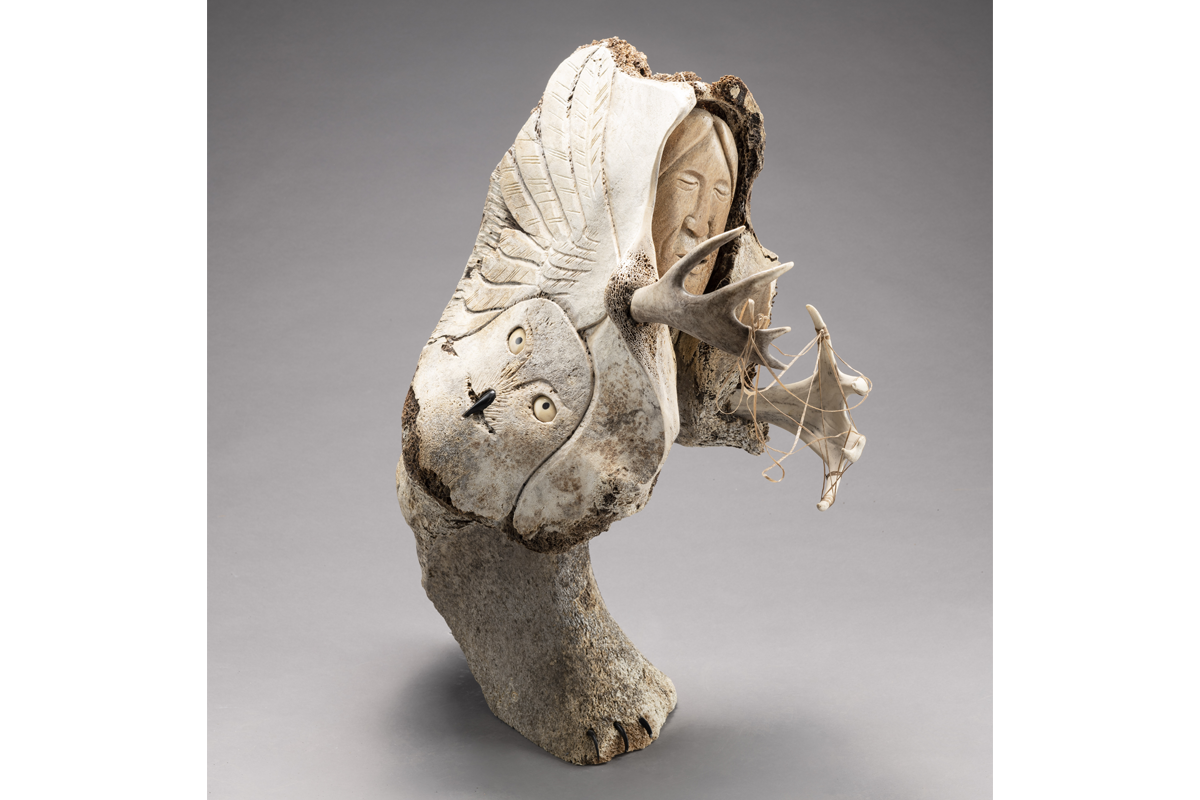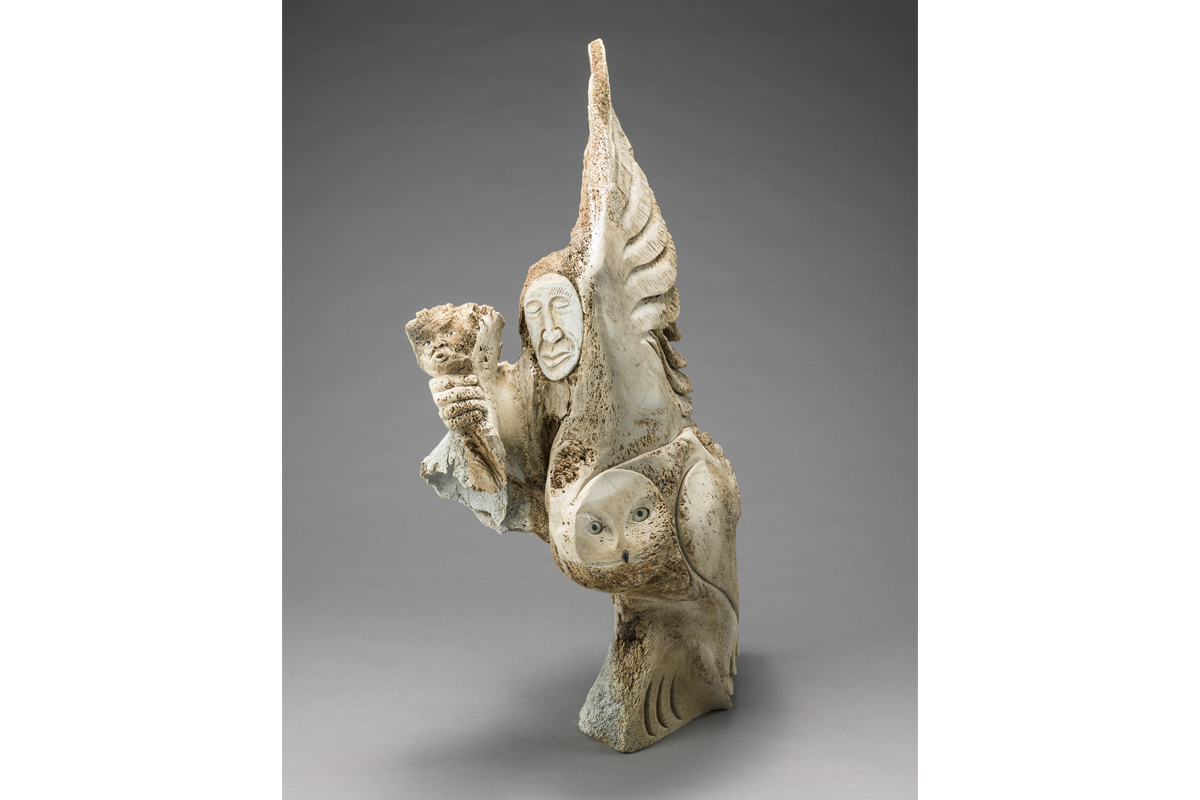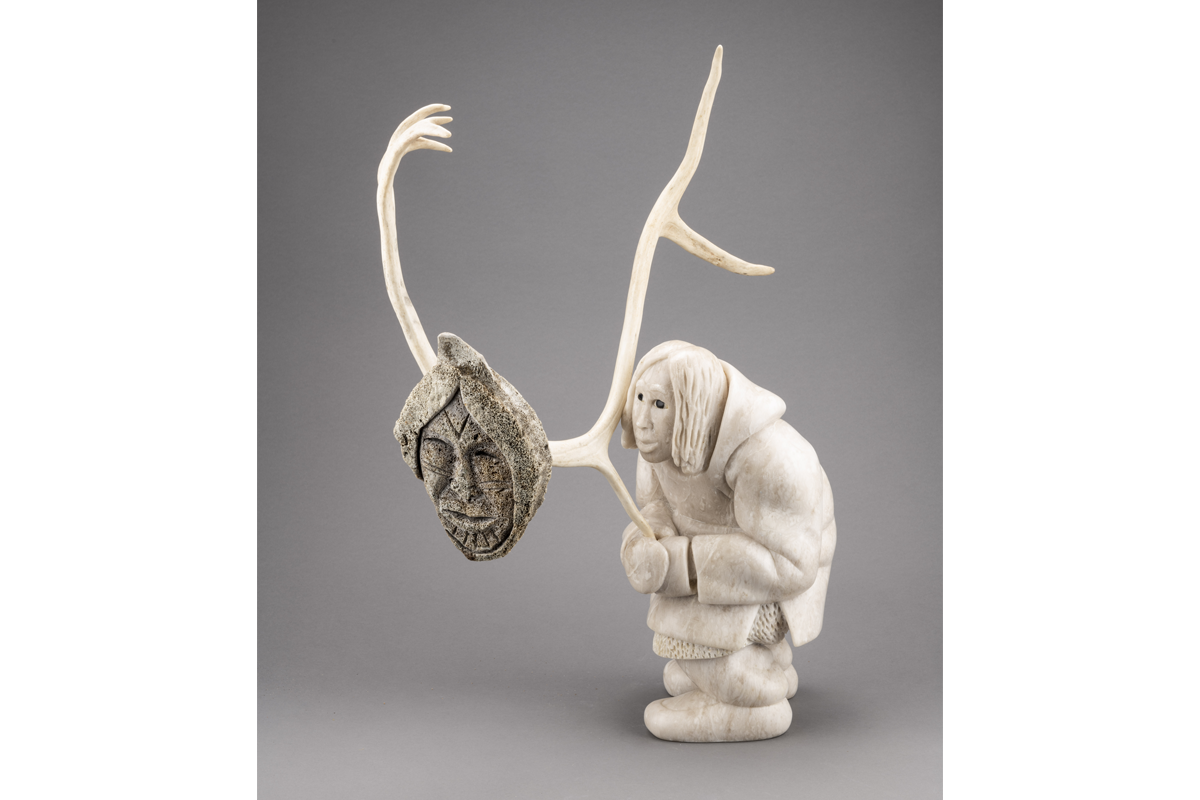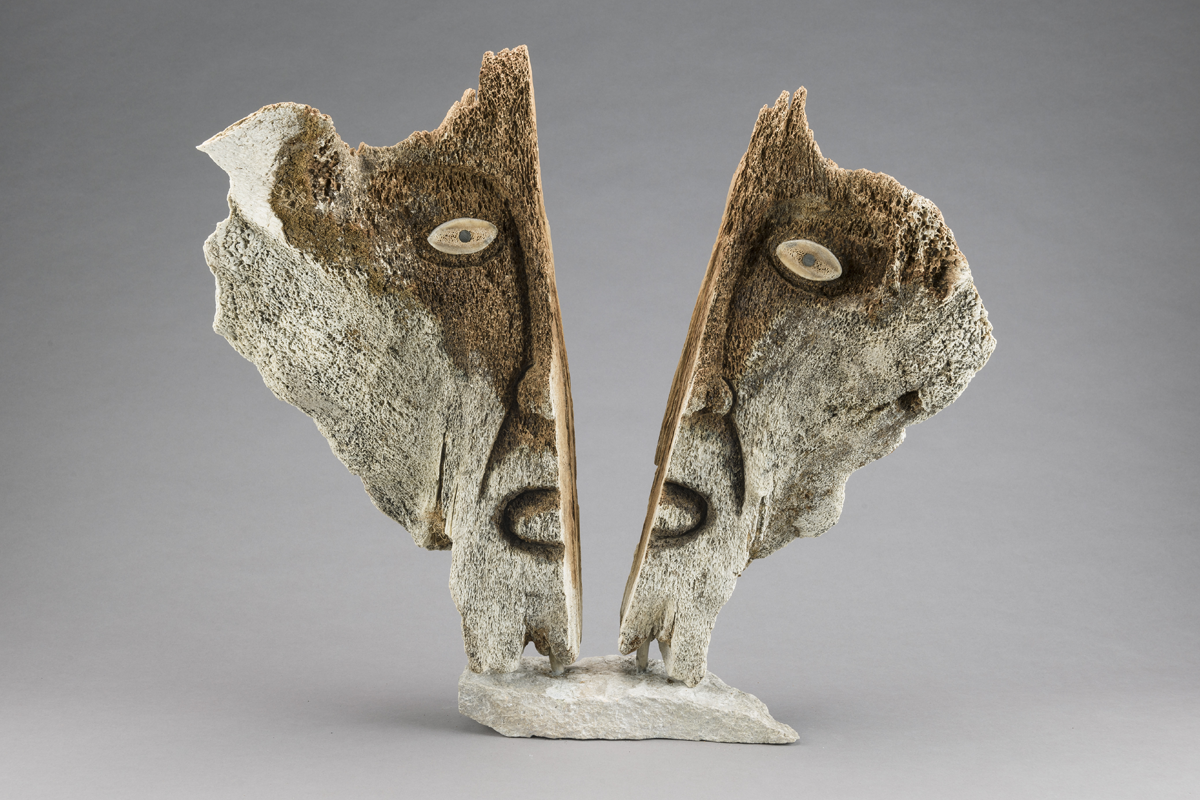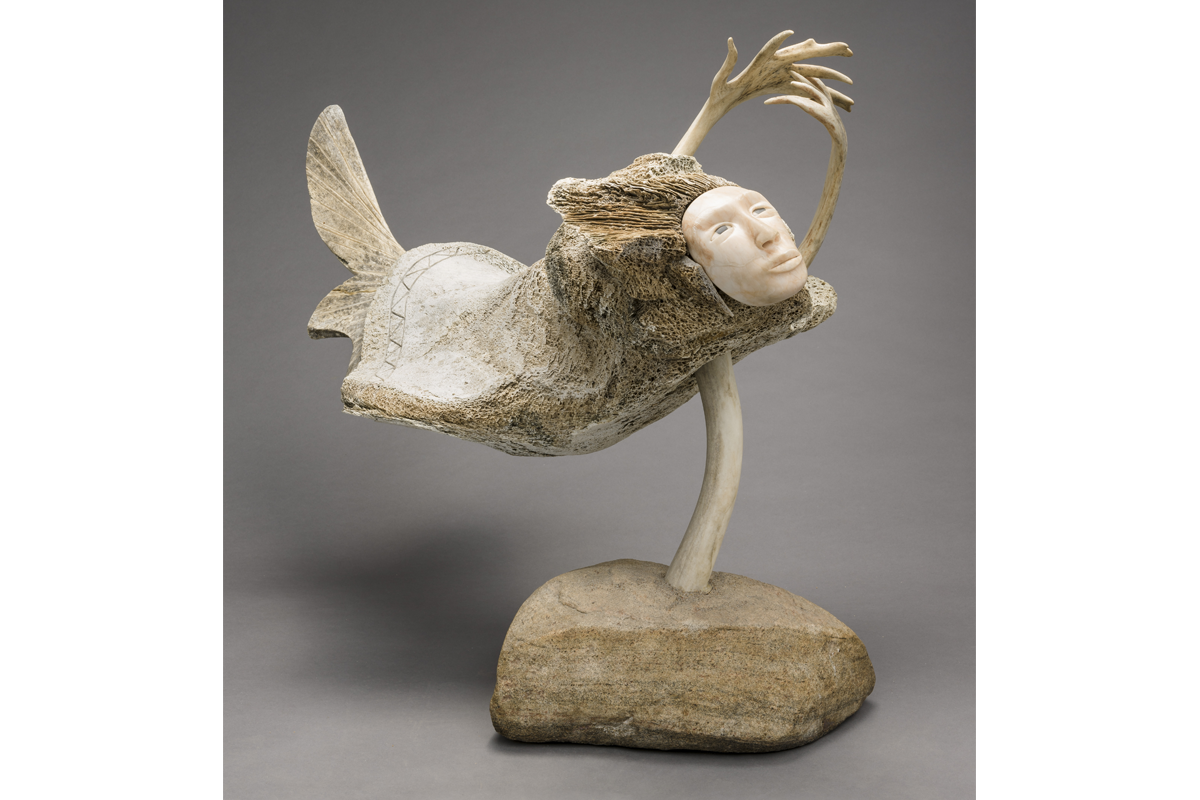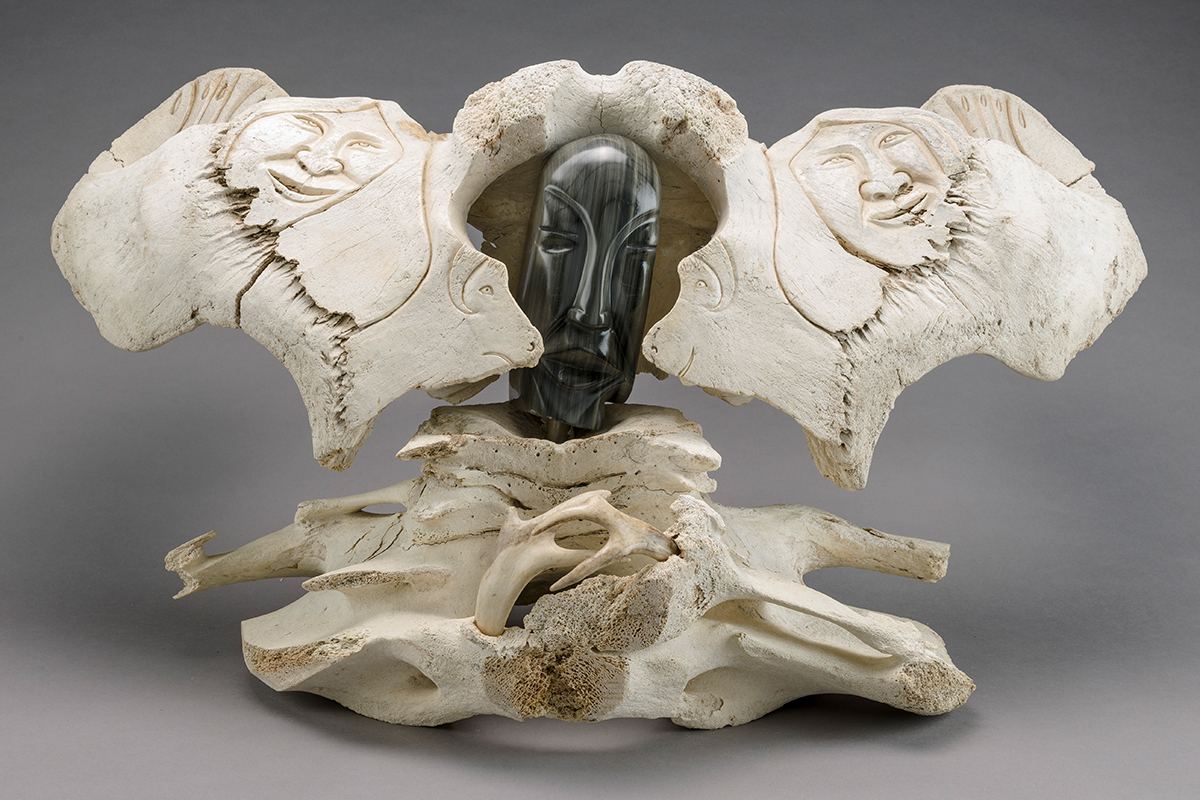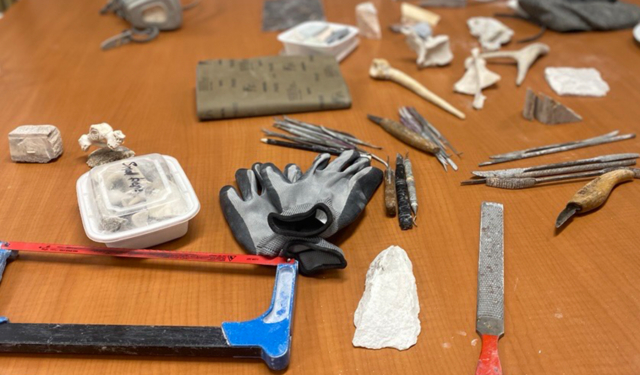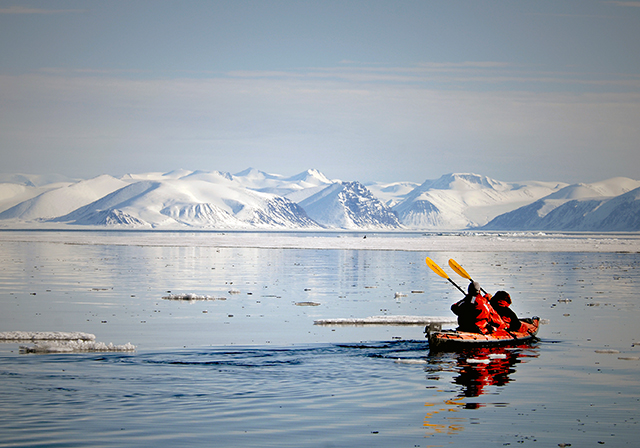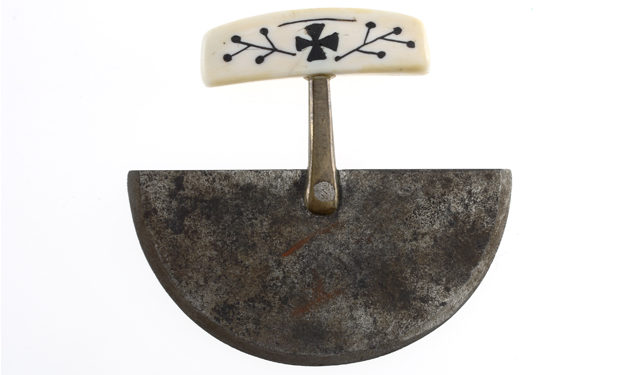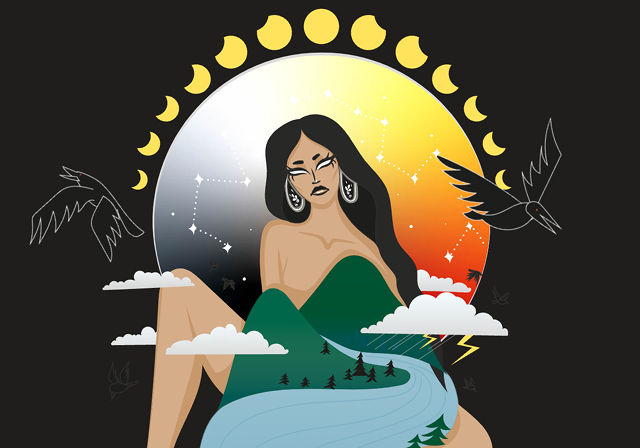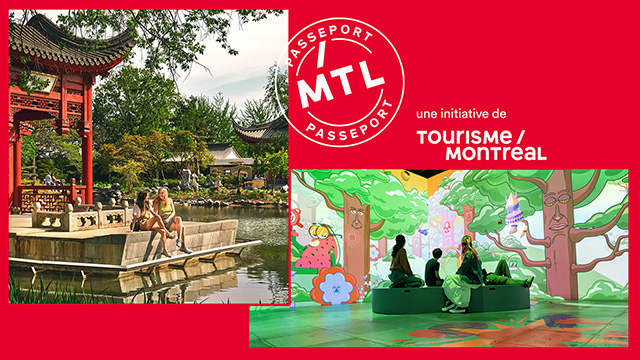Temporary exhibition
From October 4, 2024 to March 9, 2025
Manasie Akpaliapik. Inuit Universe
The Museum welcomes Manasie Akpaliapik, a contemporary artist from Ikpiarjuk (Arctic Bay) on Baffin Island, Nunavut, for Inuit Universe, an exhibition dedicated to his work.
Conceived and produced by the Musée national des beaux-arts du Québec and featuring 40 sculptures from the late Raymond Brousseau’s remarkable collection of Inuit art, the exhibition offers a unique look at the work of Manasie Akpaliapik. Considered one of the most gifted artists of his generation, he teases creations representing oral tradition, cultural values, the supernatural world, Arctic wildlife and the environment out of his preferred materials, stone, whale bone and caribou antlers.
Exhibition conceived and produced by the Musée national des beaux-arts du Québec.
About the artist
With a career spanning five decades and art displayed in institutions such as the National Gallery of Canada, the Museum of Civilization, and several private galleries, Manasie Akpaliapik has created art inspired by his deep love for animals and for Inuit legends and their narratives in which the relationship between humans and animals is one of mutual respect.
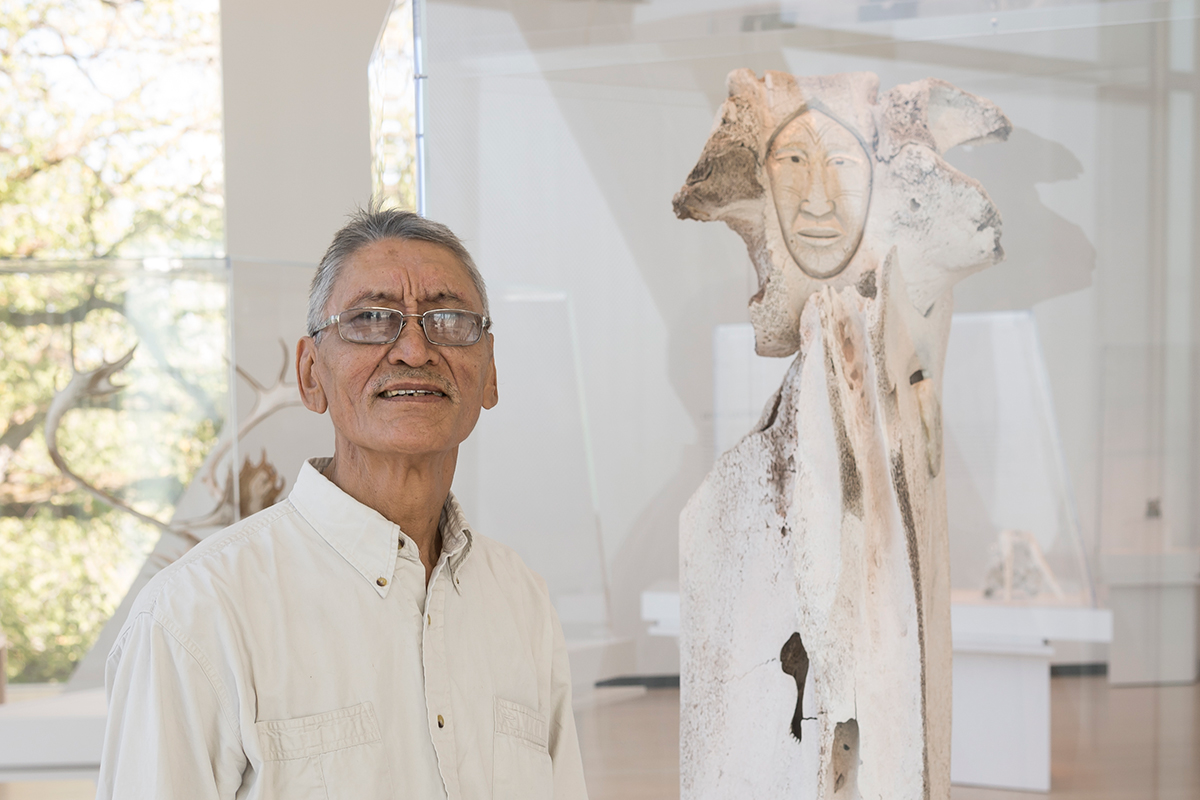
Manasie is a practised drum dancer, drum maker and is versed in kayak building. He continues to travel to the Arctic every year to search the shores for ancient whalebones and to connect with his family and community. He enjoys passing the Inuit legends to the younger generation and works tirelessly to keep the oral tradition of storytelling alive.
“Everything that I am doing is trying to capture some of the culture of our traditions, about simple things like hunting, wearing traditional clothing, and using legends. I feel that the only way we can preserve the culture is if people see it.” Manasie Akpaliapik
5 things to know
Inuit art from yesterday to today
The peoples of the circumpolar regions have been shaping stone and ivory for millennia. From the 16th century onwards, contact between the Inuit and European explorers stimulated trade. However, it wasn’t until after World War II that the nomadic northern populations were forced by the federal authorities to adopt the lifestyle of the southern population and transition from a nomadic to a sedentary way of life. Faced with the need to find new means of subsistence, the first artists’ cooperatives were formed, creating large-format prints and sculptures for shipment to the south.
Manasie Akpaliapik was born in 1955 into a small community of seal hunters. He learned to carve as a child by observing members of his family, including his grandparents, but it wasn’t until the 1980s that he decided to become a professional sculptor. Since then, Manasie has gained recognition for his sustained artistic experimentation and outstanding technical skill.
Oral transmission: Inuit tales and legends
Manasie carves musk oxen, owls, shamans and other Inuit characters. Each sculpture has a meaning and represents a legend, a feeling, a memory or a cultural tradition.
The oral transmission of knowledge through tales and legends is key to the preservation of Inuit culture. Elders also pass down ancestral arts and crafts techniques to children, like drum dancing, string games, throat singing and kayak making.
Through his art, Manasie hopes to document his culture and that of his ancestors, in order to pass it on to the next generation. His practice also allows him to find his place between the Western world and Inuit culture.
The Inuit universe
In Inuit culture, the universe is full of infinite possibilities. Spirits can take many forms. In tales and legends, characters sometimes have supernatural powers.
The spirit of the musk ox, for example, provides the strength to withstand the cold in the hostile Arctic environment, while the owl, famous for its wisdom, shepherds the spirits of the dead into the afterlife. In the traditional way of life, every part of a hunted animal is used for food, clothing or materials. Humans, wildlife and the land are connected and interrelated. Along with the stars, they form the great circle of life. The devastation of Arctic animal populations by climate change has disastrous repercussions on the traditions of Inuit peoples.
Between north and south
Manasie Akpaliapik grew up in Irpiarjuk on Baffin Island. He migrated to southern Canada (Montreal, then the Greater Toronto Area) in the 1980s. Although he works from his studio in the “South,” his materials come almost exclusively from the Far North. Every year, Manasie returns to the region where he was born to collect materials for his sculptures. His creative process hinges on the use and combination of materials gathered from the ground. The forty works presented in the exhibition – with a few exceptions – are entirely made from a combination of materials collected during his annual trips to Nunavut. As he explains: “My art helps me preserve my connection between north and south, and thus helps me find my place between the Western world and Inuit culture.”
Art as salvation
While Manasie Akpaliapik’s work reflects Inuit history and traditions, it also touches on his own personal story, with a profoundly human and universal sensitivity. Art becomes a means of expressing the challenges he has had to overcome, but also of externalizing the demons he has long battled. In his words: “When life gets really tough, my art is always there to pull me up.” His exceptional work demonstrates the influence of contemporary art and Inuit culture.
“As the custodians of a collection that bears witness to nearly 12,000 years of Indigenous history and presence on the land, the McCord Stewart Museum has long worked to highlight the vitality and diversity of contemporary Inuit, First Nations and Métis artists. Thanks to our collaboration with the Musée national des beaux-arts du Québec, we are delighted to be able to present the work of Manasie Akpaliapik, who is unquestionably one of the greats of his generation,” says Anne Eschapasse, President and CEO.
Acknowledgements
The Museum would like to thank its team and all those who contributed, directly and indirectly, to the presentation of this exhibition.
An exhibition organized and circulated by the Musée national des beaux-arts du Québec, adapted by the McCord Stewart Museum.
Curatorship
Daniel Drouin, Curator of Early Art and in charge of the Inuit Art Collection from 2005 to 2020, Musée national des beaux-arts du Québec
Scenario and texts of gallery panels and labels
Manasie Akpaliapik, Annie Akpaliapik and Daniel Drouin
Exhibition tour coordination
Yasmée Faucher, Head of Museography, Musée national des beaux-arts du Québec
The Musée national des beaux-arts du Québec thanks the Groupe de recherche et d’éducation sur les mammifères marins for the loan of the whale vertebrae.
McCord Stewart Museum team
Catherine K. Laflamme, Principal Project Manager, Exhibitions
Jonathan Lainey, Curator, Indigenous Cultures
Mélissa Jacques, Chief Technician, Exhibitions
Joelle Blanchette, Technician, Exhibitions
Olivier LeBlanc-Roy, Technician, Exhibitions
Anne-Frédérique Beaulieu-Plamondon, Officer, Digital Outreach, Collections and Exhibitions
Karine Rousseau, Head, Collections Management
Caterina Florio, Head, Conservation
Sandra Nadeau-Paradis, Officer, Publicity and Promotions
Leïla Afriat, Officer, Community Relation, Education
Julie Rose, Programs Development Assistant
L’équipe de médiation culturelle
External team
Exhibition and Graphic Design
Marie-France Grondin, Musée national des beaux-arts du Québec, adapted by Guillaume Kukucka and David Martin
Revision
Blabla rédaction
English Translation
Judith Terry
ᐃᓄᑦᑎᑑᓕᕐᑎᕆᔨ / Inuktitut Translation
Harriet Keleutak
Graphic production
Graphiscan
Pro Séri
Installation
Espace Montage
Be an insider!
Subscribe to our newsletter to get the inside scoop on upcoming exhibitions and cultural events.
Subscribe nowGo green
To come to the Museum downtown, privilege public transit and active transportation!
Tips to go green
